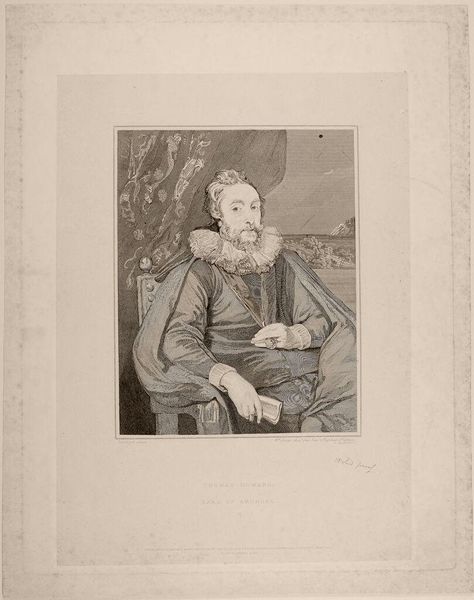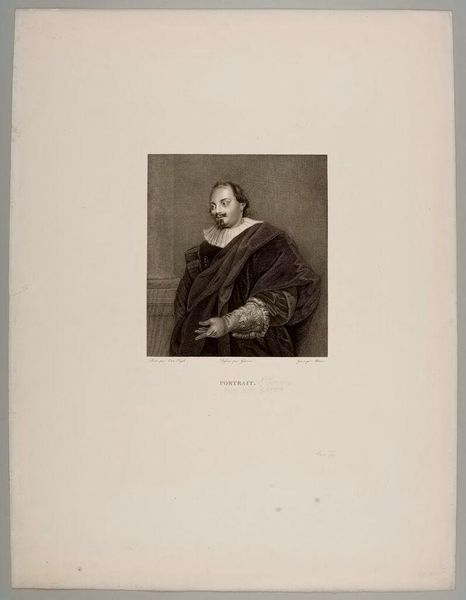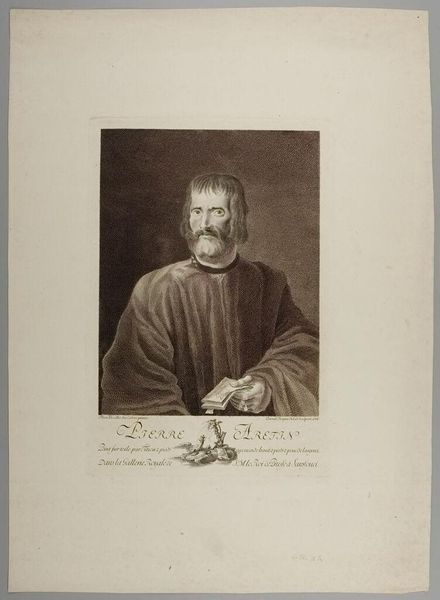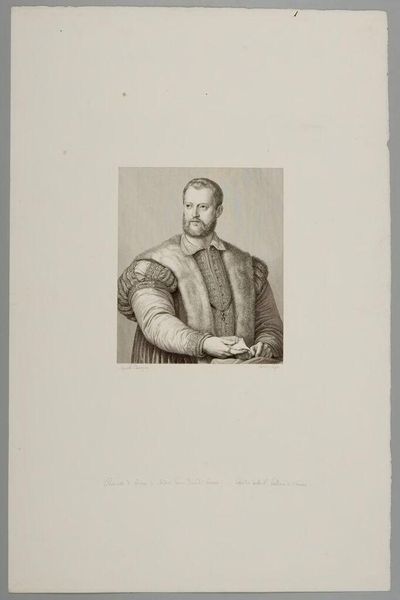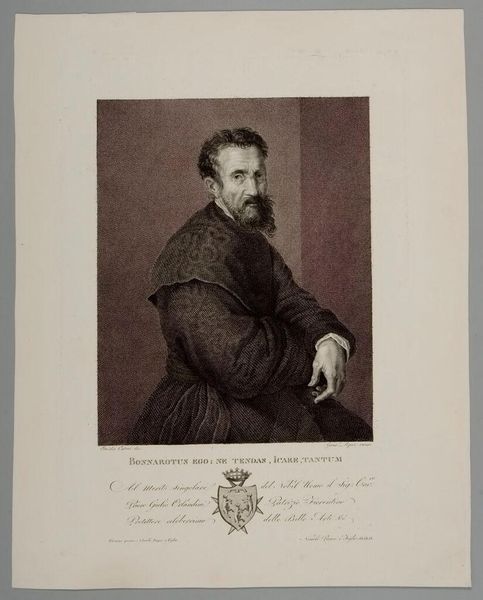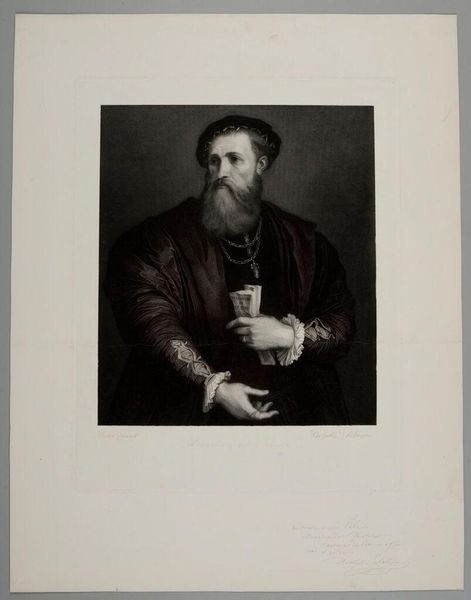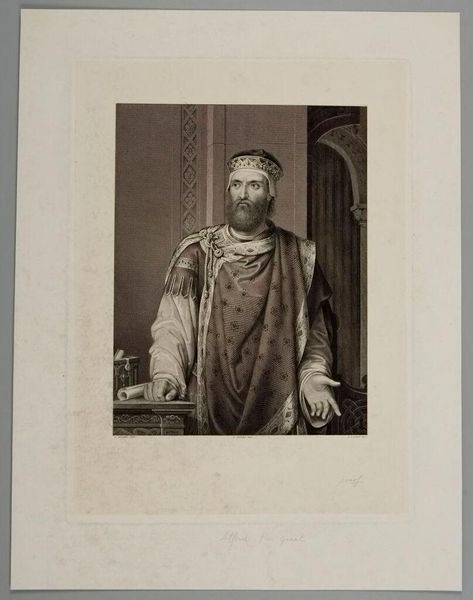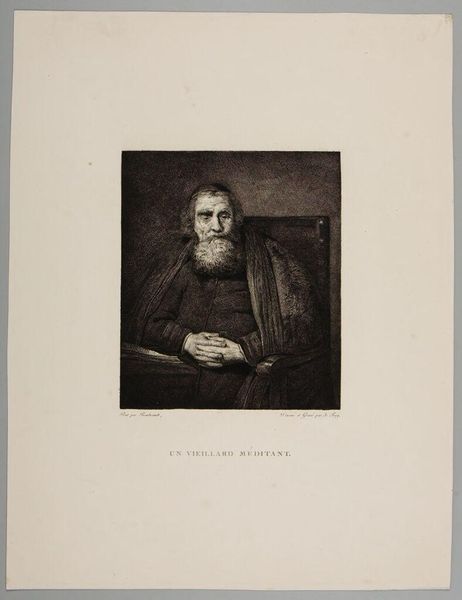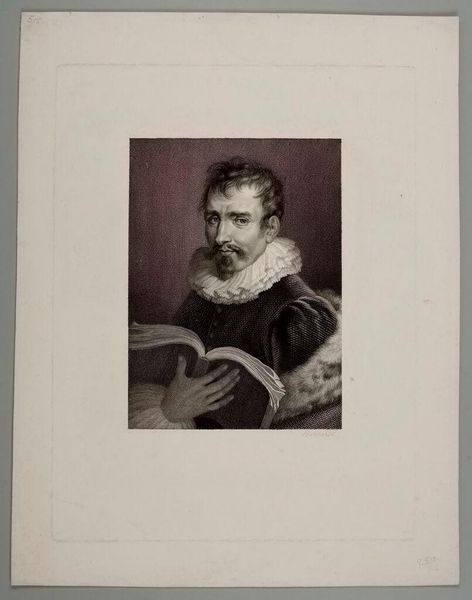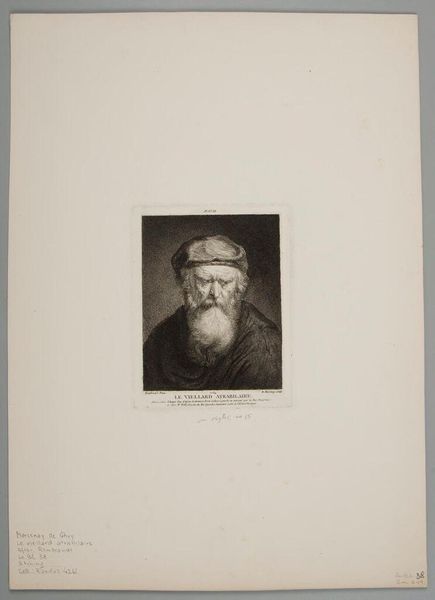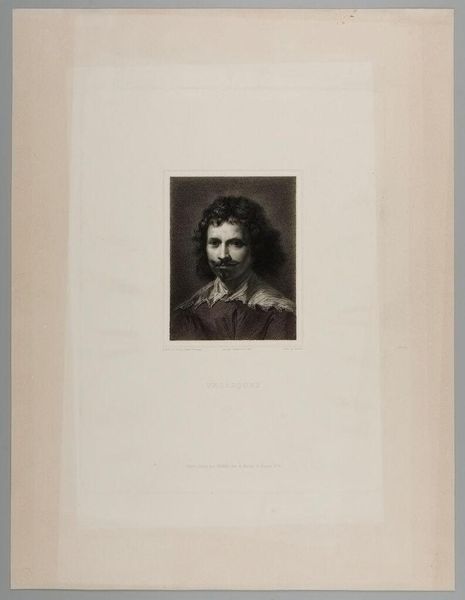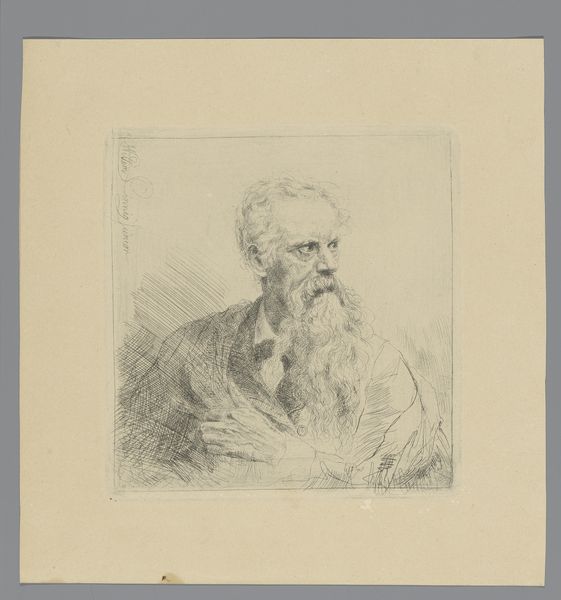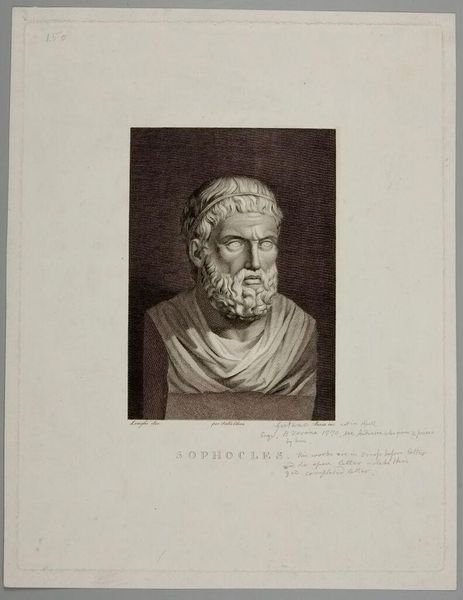
Copyright: CC0 1.0
Editor: This is Jacopo Bernardi's "Giacomo Barozzio da Vignola." He made it sometime in the 19th century, and it's currently at the Harvard Art Museums. It's fascinating, this etching seems like a way to solidify Vignola's legacy, but why choose this particular way of representing him? Curator: It’s interesting you pick up on legacy. Consider the 19th century's fascination with the Renaissance. Reproducing portraits of influential figures like Vignola wasn't just about art; it was about constructing a historical narrative, imbuing the present with the prestige of the past. How does the medium itself, etching, play into this? Editor: It makes it feel more… official, like a historical document, almost? I hadn't thought about that. Curator: Exactly. Bernardi's choice to depict Vignola holding what seems to be architectural plans emphasizes his professional authority. The image operates as a form of cultural capital, reinforcing certain ideas about artistic genius and influence, wouldn't you say? Editor: Definitely. It makes you think about how art is used to build and maintain these historical power structures. Thanks for pointing that out! Curator: My pleasure. It's crucial to recognize art's role in shaping our understanding of history and society.
Comments
No comments
Be the first to comment and join the conversation on the ultimate creative platform.
